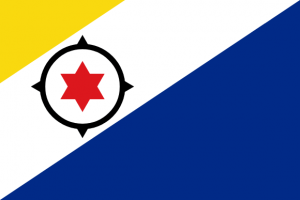Language/Dutch/Culture/Caribbean-Netherlands-Timeline
Spanish-supported pilgrims found both the leeward (Alonso de Ojeda, 1499) and windward (Christopher Columbus, 1493) island gatherings. Notwithstanding, the Spanish Crown just established settlements in the Leeward Islands. In the seventeenth century the islands were vanquished by the Dutch West India Organization and colonized by Dutch pioneers. From the last quarter of the seventeenth century, the gathering comprised of six Dutch islands: Curaçao (got comfortable 1634), Aruba (got comfortable 1636), Bonaire (got comfortable 1636), Sint Eustatius (got comfortable 1636), Saba (got comfortable 1640) and Sint Maarten (got comfortable 1648). Previously, Anguilla (1631–1650), the present-day English Virgin Islands (1612–1672), St. Croix and Tobago had additionally been Dutch. During the American Insurgency Sint Eustatius, alongside Curaçao, was a significant exchange community the Caribbean, with Sint Eustatius a significant cause of provisions for the Thirteen States. It had been classified "the Brilliant Stone" in light of the quantity of rich vendors and volume of exchange there. The English fired its main town, Oranjestad, in 1781 and the economy of the island won't ever recuperate. In contrast to numerous different districts, scarcely any migrants went to the Dutch islands, because of the frail economy. Notwithstanding, with the revelation of oil in Venezuela in the nineteenth century, the Old English Dutch Shell Oil Organization set up processing plants in Curaçao, while the U.S. handled Venezuelan unrefined petroleum in Aruba. This brought about thriving economies on the two islands, which went to bust during the 1980s when the petroleum treatment facilities were closed. The different islands were joined as a solitary nation — the Netherlands Antilles — in 1954, under the Dutch crown. The nation was broken down on 10 October 2010. Curaçao and Sint Maarten became particular constituent nations close by Aruba which had turned into an unmistakable constituent country in 1986; though Bonaire, Sint Eustatius, and Saba (the "BES Islands") became exceptional regions inside the Netherlands proper.
Willemstad From 1815 onwards Curaçao and Conditions framed a settlement of the Realm of the Netherlands. Bondage was canceled in 1863, and in 1865 an administration guideline for Curaçao was authorized that took into consideration some extremely restricted independence for the settlement. Albeit this guideline was supplanted by a constitution (Dutch: Staatsregeling) in 1936, the progressions to the public authority structure stayed shallow and Curaçao kept on being managed as a colony.
The island of Curaçao was hit hard by the abrogation of subjection in 1863. Its success (and that of adjoining Aruba) was reestablished in the mid twentieth century with the development of petroleum processing plants to support the newfound Venezuelan oil fields.
Pioneer rule finished after the finish of the Subsequent Universal Conflict. Sovereign Wilhelmina had guaranteed in a 1942 discourse to offer independence to the abroad domains of the Netherlands. During the conflict, the English and American control of the islands—with the assent of the Dutch government—prompted expanding requests for independence inside the populace as well.
In May 1948 another constitution for the region went into power, permitting the biggest measure of independence conceivable under the Dutch constitution of 1922. In addition to other things, widespread testimonial was presented. The region was additionally renamed "Netherlands Antilles". After the Dutch constitution was overhauled in 1948, another break Constitution of the Netherlands Antilles was established in February 1951. Presently subsequently, on 3 Walk 1951, the Island Guideline of the Netherlands Antilles (Dutch: Eilandenregeling Nederlandse Antillen or ERNA) was given by regal announcement, giving genuinely wide independence to the different island domains in the Netherlands Antilles. A merged form of this guideline stayed in power until the disintegration of the Netherlands Antilles in 2010.
The new constitution was just considered a break plan, as exchanges for a Sanction for the Realm were at that point under way. On 15 December 1954 the Netherlands Antilles, Suriname and the Netherlands acquiesced as equivalent accomplices to a general Realm of the Netherlands, set up by the Contract for the Realm of the Netherlands. With this move, the Unified Countries considered decolonization of the domain complete and eliminated the Netherlands Antilles from the Assembled Countries rundown of Non-Self-Administering Territories.

